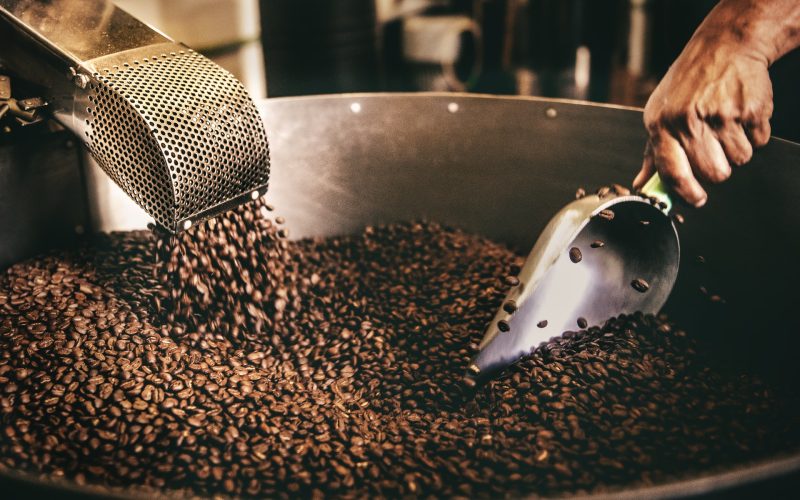How many cups of coffee do you drink a day?
If you’re like most people, the answer is at least one. Coffee is one of the most popular beverages in the world, and it’s no wonder why.
It’s delicious, energizing, and can be a great way to start your day.
Unfortunately, recent studies have shown that coffee beans are often contaminated with bisphenol A (BPA), a hazardous chemical that has been linked to a variety of health problems.
BPA isn’t just in plastic water bottles anymore. It’s also in our coffee, and a new study is raising some serious questions about why that might be the case.
So how does BPA get into coffee?
Let’s look at the science behind how BPA can find its way into your daily cup of coffee.
How BPA Gets Into Coffee: A Look at the Full Lifecycle
So how does this chemical end up in our coffee?
First, let’s explain the concept of “leaching” and how BPA gets into foods (and beverages) to begin with.
Leaching is when chemicals from a food packaging material are transferred into the food itself.
This can happen when the food (or drink) comes into contact with the packaging material, such as when coffee beans are stored in plastic bags.
It turns out that BPA can transfer out of plastic containers and into the food or beverages that they contain.
Leaching can occur when plastics are exposed to heat or acidity.
Unfortunately, there are many, many opportunities for your coffee beans or your brewed coffee to come into contact with BPA throughout the harvesting, roasting, shipping, and brewing process–each instance increasing the risk of BPA making its way from plastics and into your body.
How BPA Gets Into Coffee Beans During Harvesting and Roasting
Coffee beans are often soaked in water during the processing phase.
This water can become contaminated with BPA from plastic pipes or storage containers.
Once the coffee beans have been soaked in BPA-contaminated water, the chemical can seep into the beans themselves. When we brew a cup of coffee using these beans, we’re essentially brewing a cup of BPA-contaminated water.
But this isn’t the only risk.
Coffee beans are often stored in plastic bags before they are roasted and during the roasting process, they are exposed to high temperatures.
This raises the possibility that BPA could leach out of the plastic bags and into the coffee beans.
And once again, when we brew a cup of coffee using these beans, we’re essentially brewing a cup of BPA-contaminated water.
How BPA Gets Into Coffee During Shipping and Packaging
After the coffee beans have been roasted, they are often shipped in bulk containers, which are often made of plastic.
This means that the beans can be exposed to BPA during shipping.
BPA has also been found in canned foods. The container that the coffee is packaged in and sent to retail could also leach BPA into the beans or grounds sitting on the store shelf. Especially if the coffee is being shipped over long distances and exposed to hot temperatures, this only increases exposure risk.
How BPA Gets Into Coffee During Brewing and Drinking
Here’s where things can get really hairy.
Even if the coffee beans that you bought at the store made the entire journey (possibly around the world) without coming into contact with BPA, your at-home brewing process could contaminate your java in the final stretch.
Once you bring the beans home, if you store them in a plastic container, there is a risk of BPA leaching into the beans.
The same is true of the water you use to brew your coffee. If it’s been sitting in a plastic pitcher or bottle, it may be contaminated with BPA.
During the brewing process, coffee is exposed to hot water (or steam), which can cause BPA to leach out of plastic containers and into the coffee. This includes any plastic parts in your coffee maker, such as the carafe, the filter basket, or even the coffee pot itself.
Unless you’re specifically using a glass or metal brewing device (or a BPA-free coffee maker), your coffee is likely being brewed in a plastic coffee pot, which means that there is a risk of BPA contamination.
It’s also worth noting that many people use single-use plastic cups and lids to drink their coffee on the go.
These cups are often made with polystyrene, a type of plastic that contains BPA.
Or if you drink your coffee out of a reusable plastic cup or mug, you’re exposing yourself to even more BPA.
And finally, if you’re adding milk or cream to your coffee (which many of us do), those liquids may also be contaminated with BPA.
Conclusion
So there you have it: how BPA gets into coffee.
It’s a long and complicated process, but ultimately it all comes down to our reliance on plastics–from the fields where coffee beans are grown to our own kitchen cabinets.
If we want to reduce our exposure to this harmful chemical, we need to be mindful of the plastics we’re using (and reusing) every day.
We also need to be advocating for change at the corporate and government levels, pushing for stricter regulations on the use of BPA in food packaging. Only then will we see real change.

